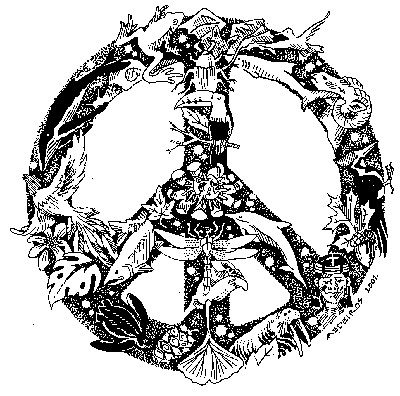


Living Lightly
![]()
41. Winter Apples
On the bare boughs of our only apple tree hang the last Fujis, pecked to halves by hungry mockingbirds. We knock the last of the whole fruit down, amazed at its crispness in January. The apple tree is mimicked nearby by a Valley oak festive with hundreds of (inedible) oak apple galls still defiant of rain and wind.
At home we stew the blemished apples with vanilla, cinnamon and star anise and try to dry the ones we can’t eat right away. Fujis are so full of water, there is not much left of the apple rings after drying except for a thin membrane the size of a rubber band.
Age-old is the desire to prolong the sweetness of fruit beyond its season. In the Polish-Lithuanian borderlands a perennial feature of the rural landscape is the root cellar, dug into the earth and insulated from freezing temperatures with an earth embankment that becomes a grassy knoll with time. Here, behind stolid doors, farmers store their bounty: the extra eggs and milk, the barrels of pickles and sauerkraut, sacks of potatoes and piles of apples. Biederman reports that “full-sized varieties [of apples] were already found in Central Europe in the Neolithic era.”
The thought of root cellars takes me back to last winter and the neighbors who would bring me sacks of their last stored apples to dry over a wood-burning stove. If children accompanied the adults, we would carve faces in some of the apples and watch their features age as the apples dried: unlined faces caved in, mouths drooped, peppercorn eyes became heavy-lidded. We gave our apples people names and reported on their progress. It was haunting to see, in a few days time, an apple face undergo its human aging. But the faces were just one of the magical properties of apples; we also discovered that if you cut an apple open in the right way, you would find a dark, gleaming star inside.
Indo-European fairy tales and myths abound in apples and their multiple symbolic meanings. An apple can stand for temptation or redemption, fertility or eternal youth, prize or poison. Rich in erotic association with a woman’s body, an apple can also represent disembodied knowledge handed down from ancestors (Is this why we give apples to teachers?)
The wild apple tree could be one of the seven noble sacred trees even the noblest, the tree of immortality (through wisdom). “Where did King Arthur go to be healed of his grievous wounds?” asks Robert Graves in The White Goddess. His answer: “To the Isle of Avalon, the secret ‘island of apple-trees.’” Aval, we are told, is the Cornish word for apple.
In Lithuanian mythology one encounters the Orchard of Magical Apples (reminiscent of the Greek Garden of the Hesperides) presided over by the Mother of Winds. She is the mistress of the orchard because wind has “the power to pollinate the apple trees.” Guarding the orchard from the violent giants who try to uproot its trees is a task often given to heroes because the apples have a singular power to restore health to the ailing, the desire for love to the indifferent, or beauty to the beloved. Whosoever succeeds in protecting the trees is rewarded with one of the magic apples which bring no gain if stolen.
The bounty of real and pseudo-apples in our backyard-the Fujis and oak apple galls-leads me back into the house to have another look at a picture on our living room wall. One of my best loved black and white photographs by Lithuanian photographer Arunas Baltenas depicts the dim interior of a painter’s home. Framed by stretched canvases stacked to the right and rear and by a herringbone parquet floor in the foreground is a pool of apples on a burlap swale. The arrangement of the apples, dark and light, in various stages of slow decay, is tender, celebratory. It is probably late fall or mid-winter and the artist has no cellar, so he is storing the apples in this room. In a cramped space full of artifacts in various stages of completion, the apples are the unrivaled centerpiece.
The beauty of the photograph is in capturing the emotional hold of apples, not in their glossy allure but in the poignancy of their decline. In the artist’s workroom, there is nothing more alive, nothing more familiar, nothing more crushing. The perfect spherical forms of the cosmos abide in their mystery even as they fade, even as they strike one last note of divine joy.
Sources: Hans Biedermann, Dictionary of Symbols: Cultural Icons & the Meanings Behind Them; Robert Graves, The White Goddess; Algirdas Greimas, Of Gods and Men: Studies in Lithuanian Mythology.
![]()

![]()
Grant opportunity supports community efforts to reduce pollution
The Environmental Protection Agency (EPA) is inviting communities to apply for grants from its Community Action for a Renewed Environment (CARE) program. CARE is a community-based, community-driven, multimedia demonstration program designed to help communities understand and reduce risks due to toxics and environmental pollutants from all sources.
The grants range from $75,000 to $300,000. The money can be used to help establish community-based partnerships to develop local environmental priorities and/or to support communities which have established broad-based partnerships, have identified the priority toxic risks in the community, and are prepared to measure results, implement risk reduction activities, and become self-sustaining. Your community’s dialogue-to-change effort could be an effective approach for working on environmental issues. Interested in applying?
ACTION: Go to http://www.epa.gov/air/grants_funding.html#0802. The deadline is March 17, 2008
![]()
